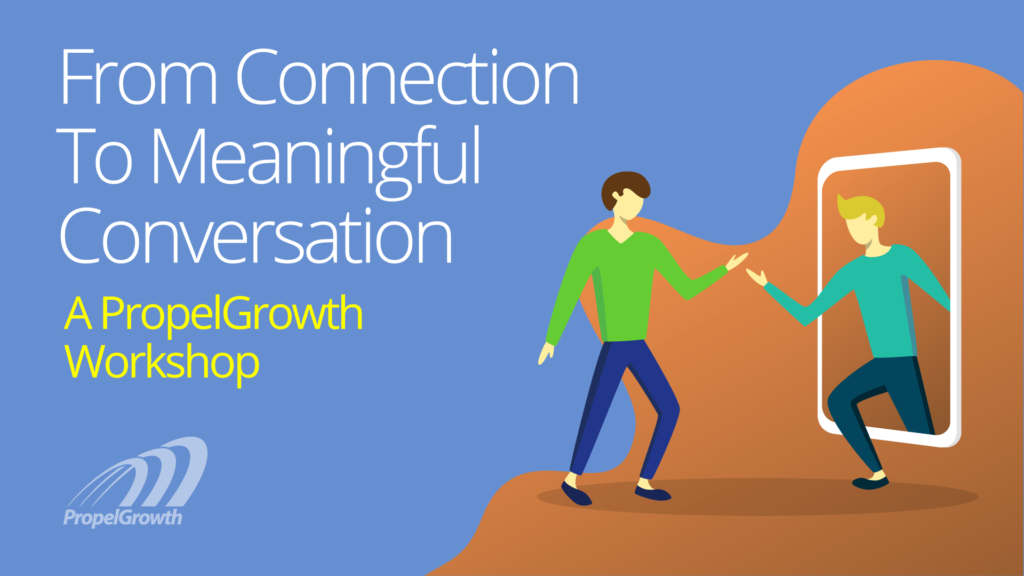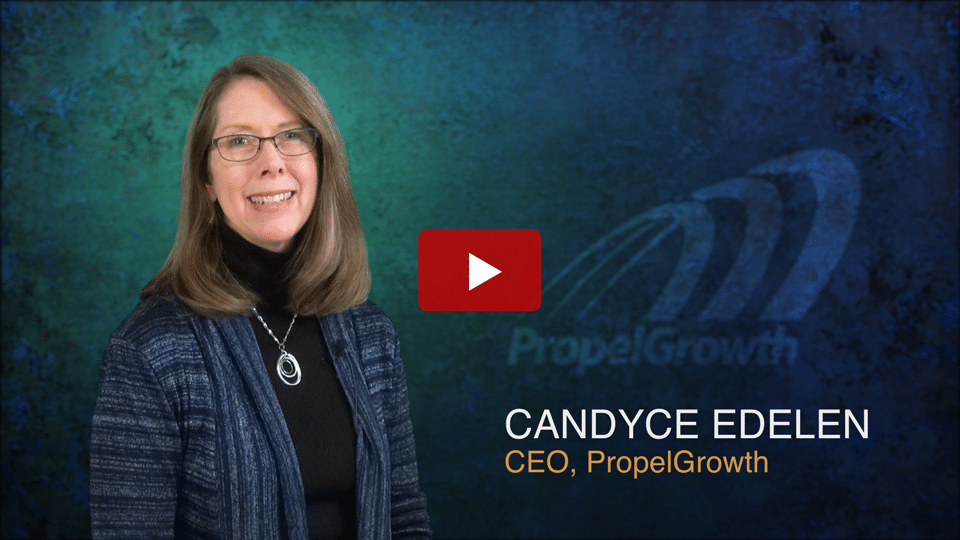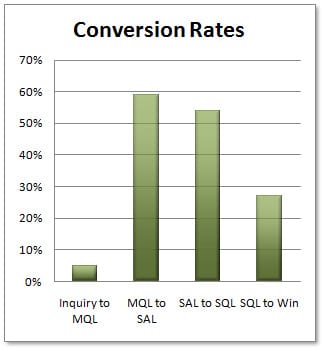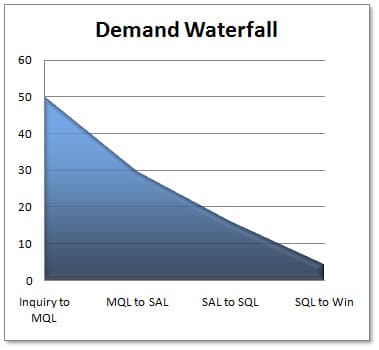B2B Lead Conversion Rates: UPDATE January 2021
This page shares years of research on lead conversion rates for both outbound and inbound marketing campaigns. Scroll down to find the inbound data. This year, we’ve also added data on conversion rates we’re seeing for our own outbound sales campaigns using LinkedIn for prospecting. You can learn more about how we run these prospecting campaigns in our own sales efforts here.
From LinkedIn Connection to Meaningful Conversation
This special-edition workshop focuses on what it takes to:
- Research a lead to find conversation starters
- Craft a connection request that gets accepted AND starts a conversation
- The kinds of messages that get conversation going, vs the approaches that stifle responses
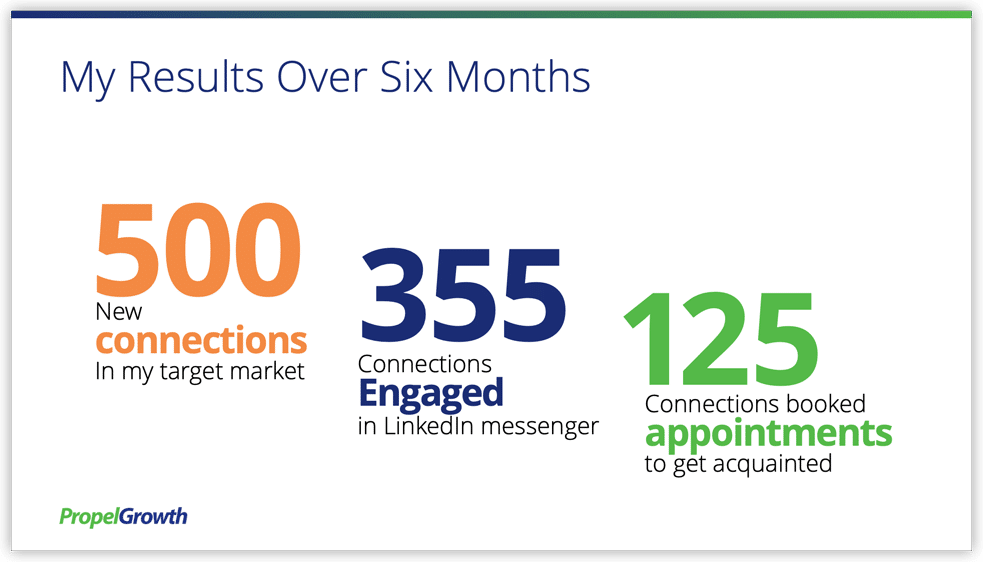
Conversion Rates using LinkedIn for Lead Generation
In 2018, we started using LinkedIn to prospect for new leads in a market where we had no existing network. We’ve had some amazing success. Over the course of 6 months, a single team member investing about 5 hours a week was able to connect with 500 new prospects, engage with 355, and book sales meetings with 125.
Here’s how our lead conversion rates broke down for each phase in the process:
- 76% of our invitations to connect were accepted
- 71% of our connections engaged via messenger or email
- 35% of our engaged connections booked sales meetings
- 21.6% of our meetings became pipeline opportunities
Please note, we did NOT accomplish these results using an outsourced LinkedIn lead generation service or a BOT. Two of our clients decided to try outsourcing. So we evaluated 12 firms and selected the 2 top performers. After 6 months of effort and about $14K of investment to EACH of the 2 providers, neither firm delivered more than a half dozen meetings. Their conversion rates were MUCH lower than what we got running the campaigns internally. So we do not recommend outsourcing this process.
Want to duplicate our process to get similar results for your business? We’ve recently launched a LinkedIn master class to show you exactly what we did.
How would 125 new sales calls for each of your reps in the next 6 months affect your pipeline? Would it help meet your revenue goals? Watch a free webinar to learn more, and if you think it would help, enroll in our master class.
Supercharge Your B2B Lead Conversion Rates With LinkedIn
- Target the right prospects faster
- Increase your lead conversion rates
- Fill your pipeline with highly-qualified leads
Benchmarking Demand Generation
Every marketer needs to benchmark performance of demand generation programs. This important step can help you understand if your efforts are truly supporting customers’ journeys through the buying cycle, which is often lengthy. In fact, according to research conducted by Harvard University and Gallup, more than a quarter of all B2B sales cycles take seven months or more to close. But where do you find appropriate lead conversion benchmarks? It’s challenging, because they tend to vary by firm and industry.
Research on B2B Conversion Rates
When we first started running lead generation programs for clients, we set out to do some research on relevant conversion rates, and came up short. The traffic we get on this page and our blog post on the topic from people searching Google for “B2B conversion rates” is evidence that we’re not the only folks looking for this information.
Conversion by Lead Stage
So we dug into the reams of data we have on campaigns and also pulled up some data from research by Sirius Decisions to provide you with the statistics below. You can also visit www.siriusdecisions.com for more detailed research on this topic. Before we dig into the actual numbers, let’s talk about some terminology. Again, we’re borrowing from Sirius Decisions. We like their “Demand Waterfall” model and use it with most of our clients – especially those with complex and consultative sales processes. This model breaks down lead qualifications into several stages. Here are our definitions of these stages:
- Impression – an impression from an ad, booth, article, search result or other marketing effort
- Website Visit – a unique visitor to the website (may be anonymous)
- Inquiry – a raw response to a program (premium offer registration form, webinar registrant, booth visitor, etc.) where contact info is obtained, but little else is known about the lead
- Marketing Qualified Lead (MQL) – a lead that meets specific predetermined qualification criteria such as company size, industry, role of lead, frequency of visits, specific pages visited, etc.
- Sales Accepted Lead (SAL) – a lead formally accepted by sales, and upon which sales is compelled to work in a given time frame
- Sales Qualified Lead (SQL) – a lead that has evolved into a qualified pipeline opportunity
- Win – closed business
Why Track Conversions by Lead Stage?
Most companies track lead-to-close ratios. But we strongly recommend that you track conversion rates from one lead stage to the next. This will give you a more granular assessment of what’s working and what needs improvement. We also recommend associating leads with the programs that generate initial inquiries so you can measure conversions by program and identify the campaigns and methods that generate the best qualified leads.
However, if your sales process is complex and involves a number of different players in the buying committee, then just looking at the original lead source will not be enough to truly identify which programs help drive conversions. In this case, you’ll also want to track content that helps influence each stage in the buying process.
Based on our experience, firms that have effective lead nurturing and follow-up processes in place can expect conversions roughly in line with the following charts (click to enlarge):
Track Accounts, Not Just Leads
If you’re selling to enterprises, top or mid-tier banks, brokers, or buy-sides, your clients’ buying process is probably fairly complex involving key influencers from multiple departments. In this selling environment, each member of the buying committee is progressing through their decision cycle at different speeds. Often, there are lengthy time spans between the time when new inquiries finally become marketing and then sales qualified. It’s helpful to take an account-based view of your lead activity to uncover opportunities and notify the Sales team when accounts appear to be heating up.
Most B2B Leads are Not Sales-Ready
According to MarketingSherpa, only 27% of B2B leads are sales-ready when first generated. If leads are not consistently nurtured with strong content during this process, expect conversion rates to drop precipitously. Good lead nurturing helps keep qualified leads in the pipeline, keeping their attention and interest until they’re ready to buy.
Calling Promptly Helps Convert Those Ready to Buy
Studies have shown that following up on a lead within minutes of their registration improves conversion rates for those who are ready to buy. But understand – an inquiry is NOT a qualified sales lead. So set expectations accordingly. Top performing marketers use an inside sales resource to follow up with leads promptly and figure out which ones are qualified.
But the people who are calling need to be prepared to have an intelligent conversation about the offer that generated the lead. For example, if a lead downloaded a white paper or attended a webinar, then the sales person should call to discuss the topics that led the person to take that action rather than trying to immediately book a product demo. This approach will help Sales find those people ready to have a conversation now, while allowing Marketing to nurture the inquiries that are not ready.
Buyer Personas
Actionable buyer personas will help you optimize the leads you’re generating and improve your conversion rates. Buyer personas are composite examples of the different types of people involved in the buying process. Keep in mind that each stakeholder will have different business concerns that you’ll need to address in your marketing efforts.
Here is a buyer persona template to help you get started.
For more information on buyer personas, here are some articles:
Need Some Help?
We offer a coaching service to help firms improve their B2B lead generation and conversion rates. Call or email us if you’d like to discuss this further.
Relevant Resources
View our useful resources below for more information on effective ways to drive B2B conversions.
Lead Calculator: Calculate how many leads you need to achieve your sales goals.
B2B Lead Conversion – Qualification Matters: How to qualify leads so you’re not passing unqualified inquiries to Sales.
Marketing ROI – It’s All About Revenue: A group of senior marketers discuss how they’ve improved the ROI in their marketing programs.
Technology Buying Process – What’s Really Happening: Check out the results of our research on how institutions buy technology.


